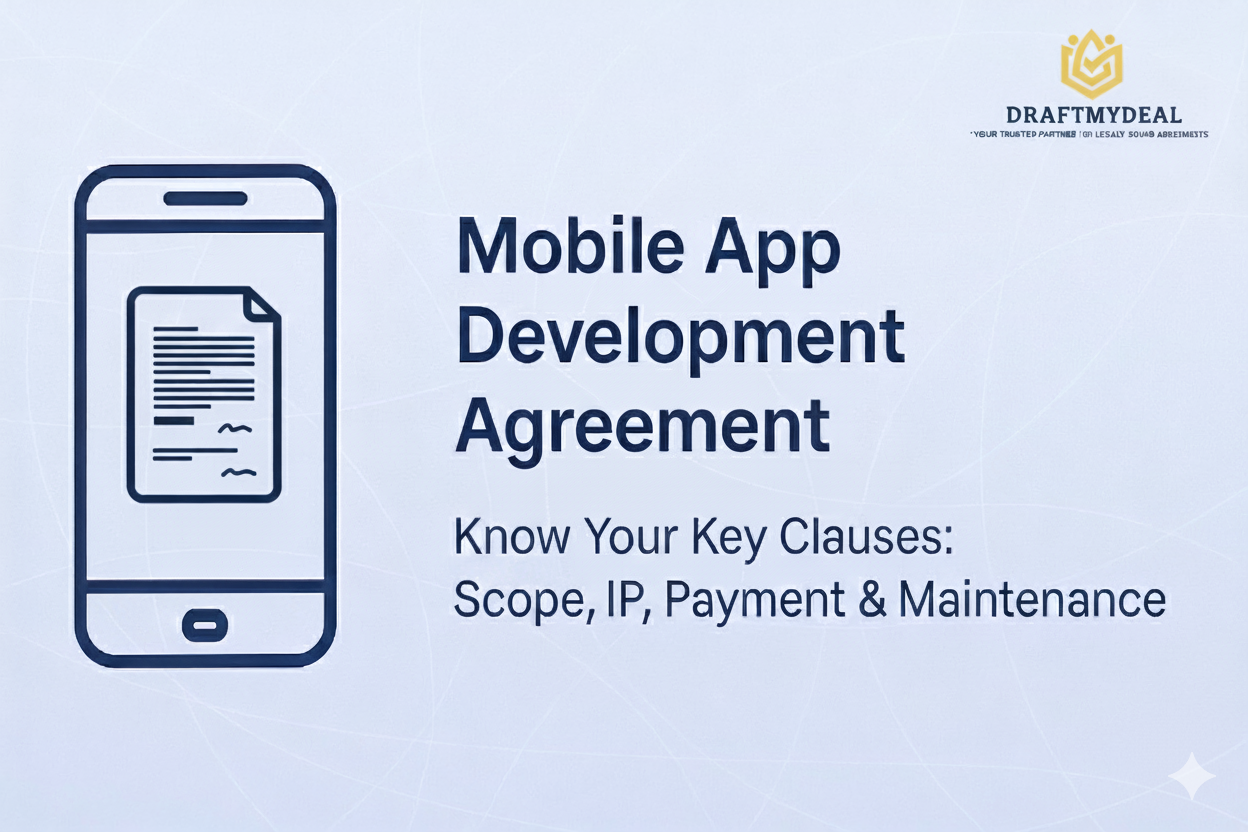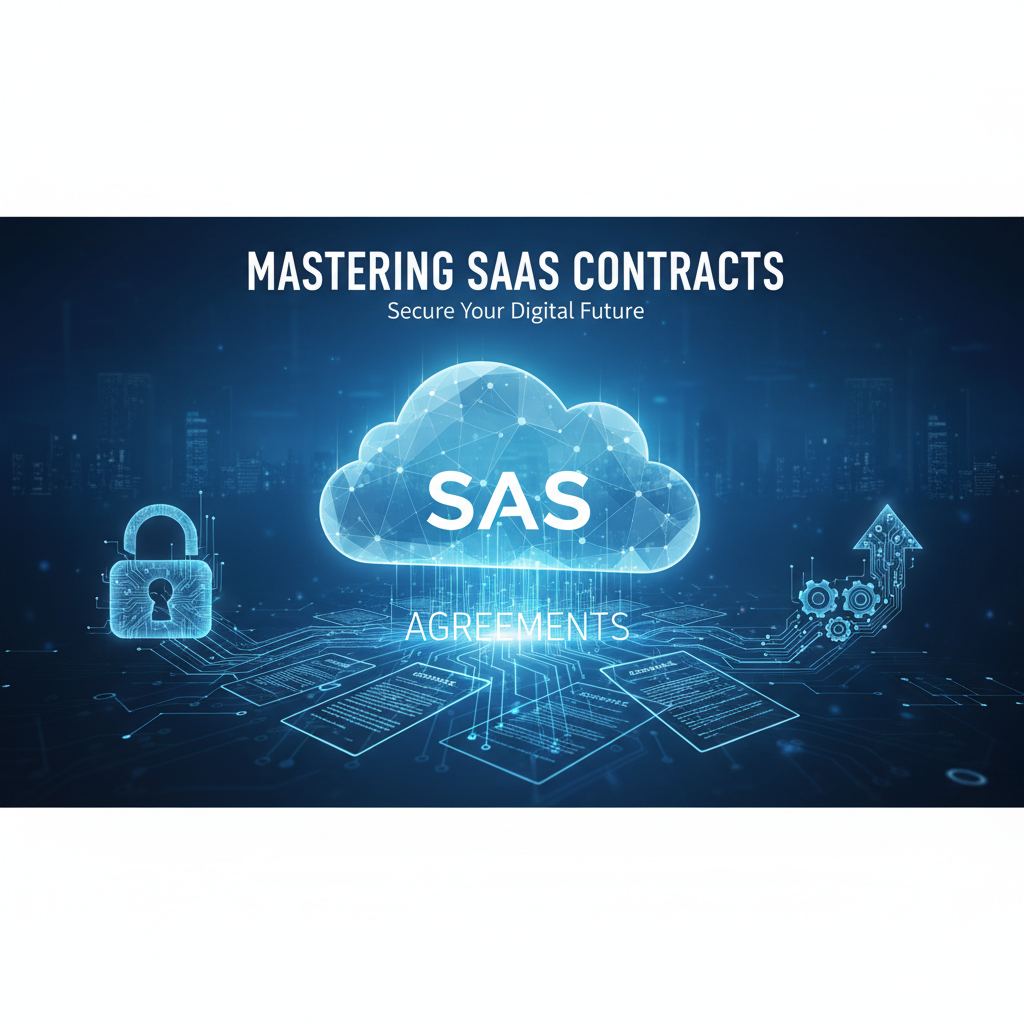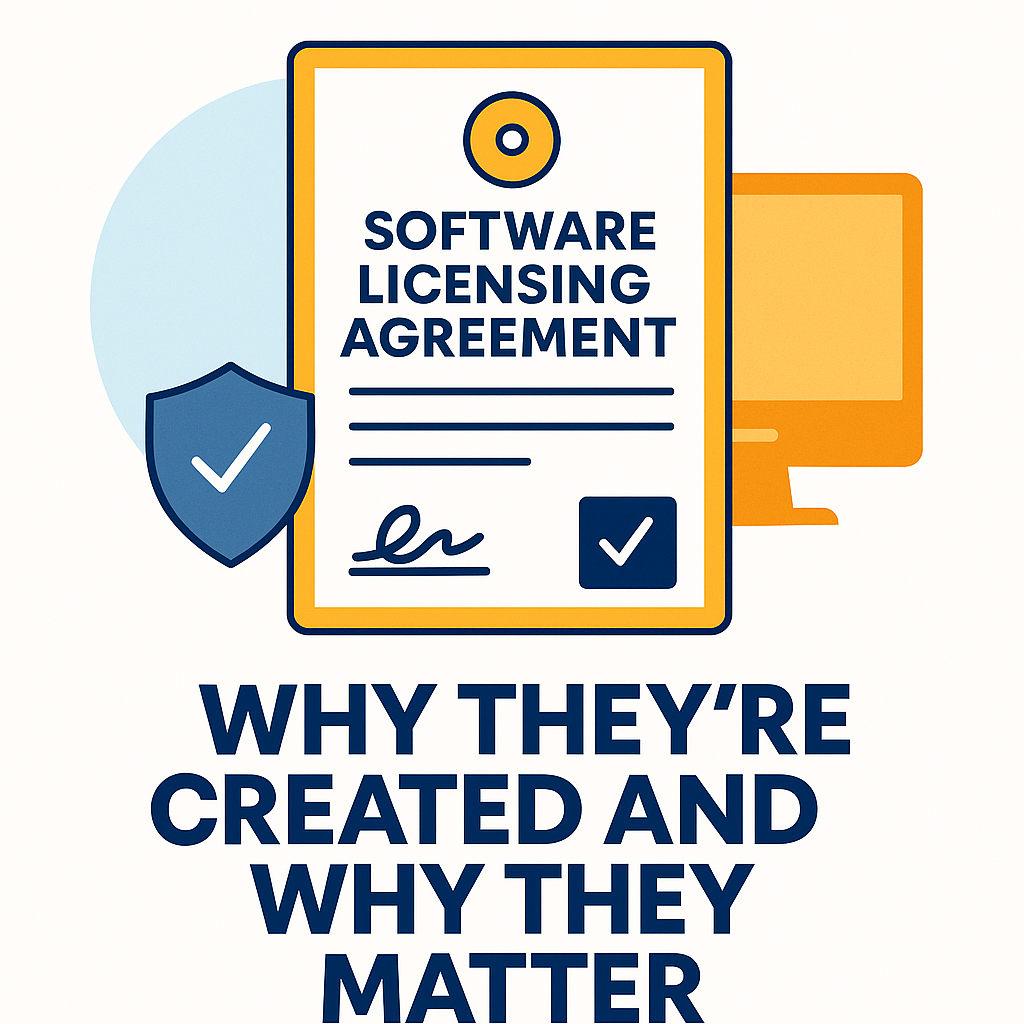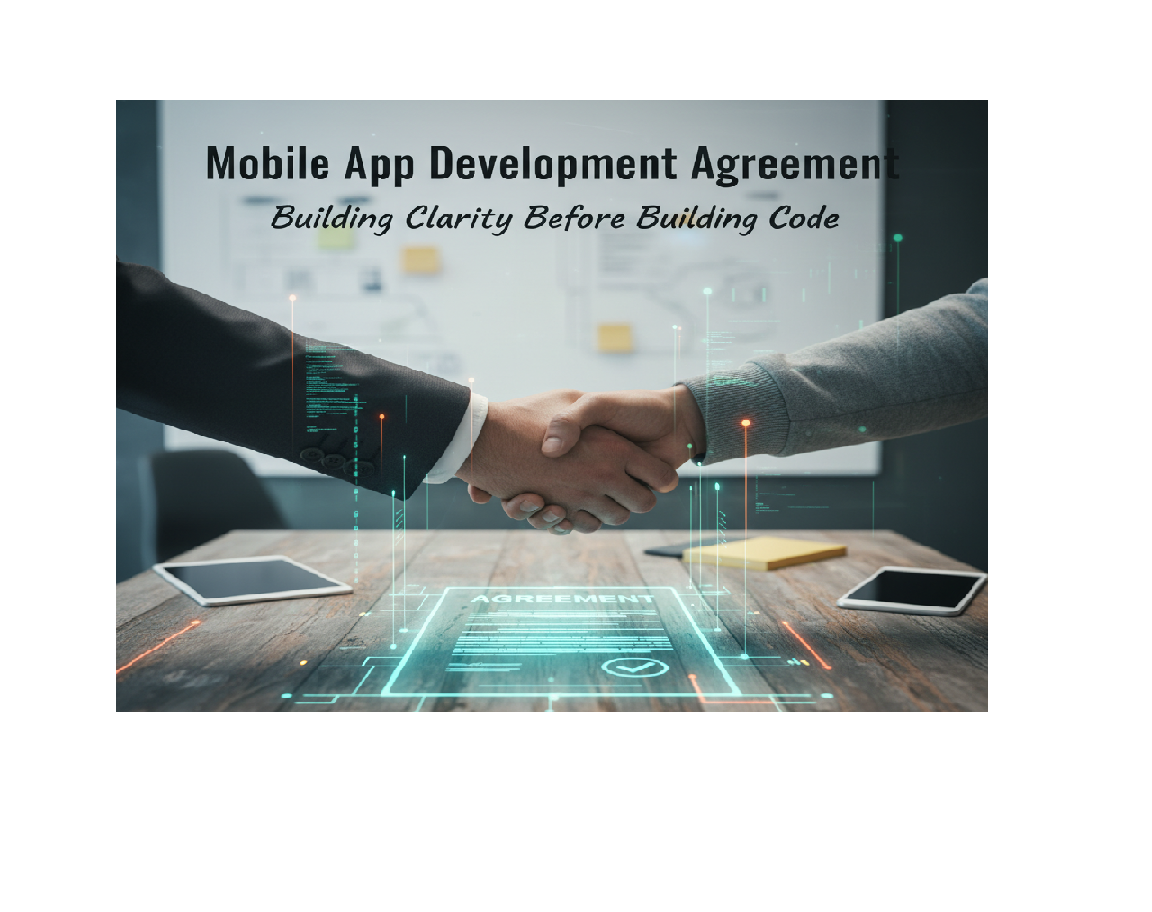

October 30, 2025
Mobile App Development Agreement – Building Apps with Legal Clarity
In today’s digital economy, businesses across industries are leveraging mobile applications to connect with customers, streamline operations, and expand their digital footprint. However, behind every successful app lies not just great code but also a well-drafted Mobile App Development Agreement—a legal blueprint that defines the rights, responsibilities, and expectations between the client and the developer.

September 30, 2025
Understanding SaaS Agreements: A Guide for Businesses
In today’s digital-first world, Software-as-a-Service (SaaS) has transformed how businesses operate. From project management tools to cloud-based CRMs, SaaS platforms are integral to daily workflows. But behind every smooth login and subscription lies a legal framework that governs the relationship between the provider and the customer: the SaaS Agreement.
What is a SaaS Agreement?
A SaaS Agreement is a legally binding contract between a software provider and its users. Unlike traditional software licenses, where customers purchase and install software, SaaS agreements typically grant access to software hosted on the provider’s servers. The focus shifts from ownership to access, making clear definitions and obligations crucial.
Key Components of a SaaS Agreement
1. Scope of Services
This section defines what the software does, how it can be used, and any limitations. Clear descriptions help manage customer expectations and protect providers from disputes.
2. Subscription Terms and Fees
Since SaaS usually works on a subscription model, this part outlines pricing, billing cycles, renewal terms, and conditions for cancellation or termination.
3. Service Levels and Uptime Commitments
One of the most critical aspects, especially for business-critical software. Service Level Agreements (SLAs) often specify uptime guarantees, response times, and remedies if standards are not met.
4. Data Security and Privacy
With SaaS involving customer data stored in the cloud, data protection measures are essential. Agreements should address encryption, access controls, backups, and compliance with laws like GDPR or HIPAA.
5. Intellectual Property Rights
Typically, the provider retains ownership of the software, while users are granted a limited license to use it. Clauses often restrict reverse engineering, copying, or redistribution.
6. Confidentiality and Non-Disclosure
Both parties may exchange sensitive information. Confidentiality clauses ensure such data is not misused or disclosed.
7. Termination and Suspension
This section sets out when and how either party can terminate the agreement, what happens to user data afterward, and whether refunds are applicable.
8. Liability and Indemnification
Providers usually limit their liability to the fees paid by the customer, while indemnity clauses protect both parties from third-party claims.
Why SaaS Agreements Matter
For providers, a well-drafted SaaS agreement protects intellectual property, limits liability, and ensures predictable revenue. For customers, it offers transparency about service expectations, data handling, and exit options. Without a clear agreement, both sides risk misunderstandings, disputes, and financial losses.
Final Thoughts
As SaaS continues to grow, the importance of robust SaaS agreements cannot be overstated. They form the backbone of trust between provider and customer. Whether you are a SaaS startup looking to draft your first agreement or an enterprise evaluating a new vendor, understanding the nuances of these contracts is essential. Investing time in reviewing or customizing your SaaS agreements ensures smoother relationships, stronger compliance, and greater peace of mind.

September 18, 2025
Software Licensing Agreements: Why They’re Created and Why They Matter
In today’s digital economy, software is one of the most valuable assets a business can own or use. From SaaS platforms to custom-built applications, software powers nearly every modern business operation. But behind every software product is one crucial legal document: the Software Licensing Agreement.

September 08, 2025
The Ultimate Guide: Essential Components of a Software Development Agreement
If you’re a software developer or run a software company, you know that building great products is hard work. But what’s even harder is dealing with misunderstandings, disputes, and legal headaches that could have been avoided.
That’s why having a clear, well-drafted Software Development Agreement (SDA) is crucial.
This guide walks you through the essential components every software company should include to protect your work, your business, and your peace of mind.
1. Define the Scope of Work (SOW)
Why it matters:
A vague project description is the number one cause of “scope creep.” Without a clear scope, clients may expect extra features for free, and developers can feel exploited.
What to include:
-
Detailed description of deliverables
-
Timelines for each phase
-
Responsibilities of both parties
-
Acceptance criteria for completed work
Tip: Be as specific as possible. Instead of saying “Develop a mobile app,” say “Develop a cross-platform mobile app with user login, push notifications, and payment gateway integration.”
2. Clarify Intellectual Property Rights (IPR)
Why it matters:
Who owns the software when development is finished? This is often a source of dispute.
What to include:
-
Specify whether the client receives full ownership or a license
-
Define ownership of source code, designs, and documentation
-
Clarify usage rights after project completion
Tip: If you’re developing reusable components, specify which parts remain your property.
3. Set Clear Payment Terms
Why it matters:
Without clear payment terms, you risk chasing unpaid invoices or accepting unfair delays.
What to include:
-
Payment structure (fixed fee, hourly rate, milestone-based)
-
Payment schedule (e.g., 30% upfront, 40% after first milestone, balance on delivery)
-
Late payment penalties (if any)
Tip: Link payments to clear milestones to ensure steady cash flow.
4. Protect Confidential Information
Why it matters:
Software projects often involve sensitive business ideas or client data that must stay private.
What to include:
-
Define what constitutes confidential information
-
Specify duration of confidentiality obligations
-
Include consequences for breach of confidentiality
Tip: Even after the project ends, confidentiality should remain in force for a reasonable period (e.g., 2 years).
5. Handle Changes with a Change Management Clause
Why it matters:
Requirements often change mid-project. Without a process in place, these changes can cause disputes over deadlines and costs.
What to include:
-
Procedure to request changes in scope
-
How changes affect timelines and pricing
-
Need for written agreement on changes before implementation
Tip: Make sure no verbal agreement is binding—everything should be documented.
6. Define Warranties and Liability Limits
Why it matters:
Who is responsible if the software doesn’t perform as expected? Unlimited liability can be a big risk.
What to include:
-
Warranty period (e.g., 90 days of bug fixes after delivery)
-
Limitations of liability (e.g., limited to the project’s total value)
-
Exclusions (e.g., not responsible for third-party integrations)
Tip: Set realistic warranty terms that reflect your project scope.
7. Set Fair Termination Conditions
Why it matters:
Sometimes, projects don’t work out. A clear termination clause avoids messy disputes.
What to include:
-
Grounds for termination (e.g., material breach, non-payment)
-
Notice period required
-
Handling of work completed and payments due upon termination
Tip: Include a clause that governs the return or destruction of confidential materials after termination.
Conclusion: Don’t Let Ambiguity Derail Your Software Project
A well-structured Software Development Agreement is not just legal formality—it’s a strategic tool that sets expectations, protects your work, and keeps your project on track.
At DraftMyDeal, we help software companies draft agreements that are easy to understand, practical, and enforceable.
Ready to safeguard your next project from costly disputes and uncertainty




